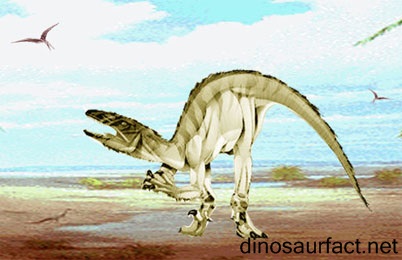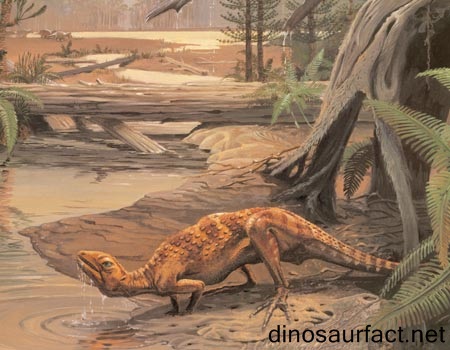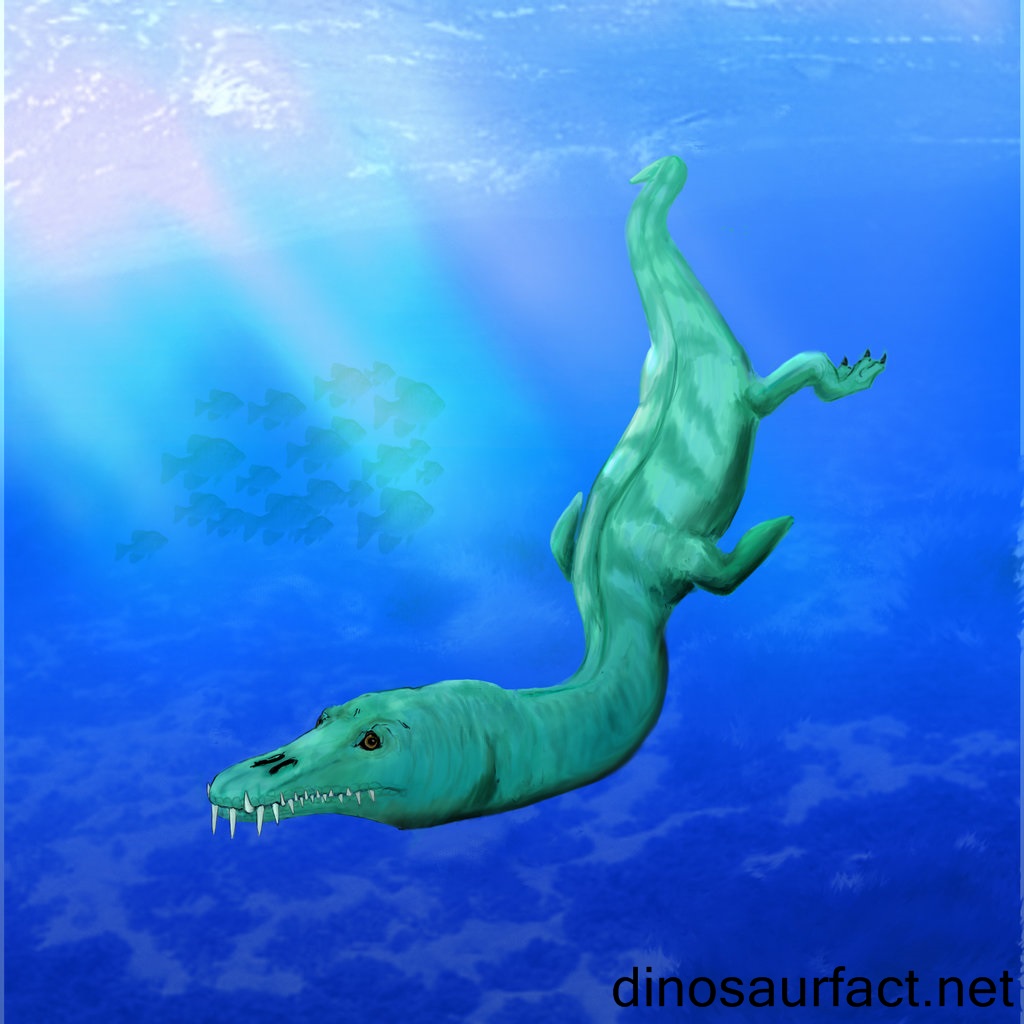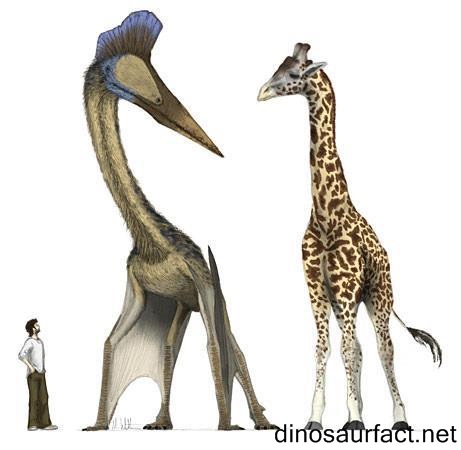The Adasaurus |

The one species Adasaurus Mongoliensis was obviously named after the country. Both fossil skeletons were found and described by Barsbold in 1983. The first discovery consisted of a skull, all three pelvis, along with many misalainious body bone parts. The second discovery was the lower half of its body including the hindlimbs and feet etc. Adasaurus is part of the Dromaeosaurinae family making it closely related to the Deinonychus, Velociraptor, Microraptor, and Buitreaptor. So they have much in common. They are smaller, have sharp claws, a long tail, feathers possibly, etc. |
viernes, 16 de julio de 2010
The Scutellosaurus |

|
The Lariosaurus |
 Lariosaurus was an extinct genus, which belonged to the suropterygian family. It is known to have lived during Triassic period. This dinosaur received its name from Curioni in the year 1847. It is known to have belonged to the nothosaur order. The term Lariosaurus was derived from the Greek word, the meaning of, which is lario lizard. This term is pronounced as lah-ree-oh-sore-us. Lariosaurus is known to have possessed small flippers and short neck as compared to its relatives. Its hind limbs are known to have possessed five-toe feet, while its front legs were paddles. The stubbier toes and the shorter neck of Lariosaurus might have limited its swimming ability to a certain extent. It was basically a water living dinosaur, but it has been found that it would have spent time in land as well for hunting prey. It has been found that Lariosaurus can grow up to a length of 60cms (i.e.) 2 feet. From the fossils of Lariosaurus, it has been found that it had two juvenile placodonts, with the help of which the researchers assumed that it might have had the same diet as nothosaurs. The fossils of Lariosaurus were found at the coastal areas of Western Europe . Apart from Europe the fossils were found in Spain , China and France as well. It was an aquatic reptile that might have lived in coastal and brackish waters. Lariosaurus was distinctly un-hydrodynamic with its short legs and arms, knobby body and primitive flippers. From this statement is very clear that it was the first among the other breed of aquatic reptiles like pliosaurs and plesiosaurs of the Cretaceous and Jurassic periods. Apart from its ancient derivation, Lariosaurus was noted to be the smallest aquatic reptile discovered so far. This reptile was very small and later other dinosaurs, which came under this category were somewhat bigger as compared to this swimming lizard. From the fossils of lariosaurus the following information had been discovered: • The skull of lariosaurus is elongated and it had a very long postorbital region and elongated upper temporal fenestae. The anterior teeth and the rostrum are interiorly constricted interlocking each other when the lariosaurus closes its jaws. • The vertebral column consisted of at least 39 caudal, 5 sacral, 20 dorsal and 22 cervical vertebrae. But, these figures differ from another dinosaur of the same family called lariosaurus balasamii. • The dorsal ribs are pachyostotic and the cervical ribs show a distinct anterior process. • The caudal ribs do not extend beyond 15-16 caudal vertebra and decrease in length rapidly. • As in other lariosaurus the front limbs would have been stouter than the hind limbs. It would have used its fore limbs effective for the purpose of swimming. • It would have had a stout hemerus. • In lariosaurus the researchers found a peculiar ulna (i.e.) the radius of the ulna is narrower and it is greatly broadened. In between the ulna and the radius there was a wide spatium interosseum. From the above points, it is clear that lariosaurus was very primitive as compared to other members of its family. |
The Arambourgiania
The Arambourgiania |

Arambourgiania is a creature, which belongs to the category of pterosaur and it is known to have lived in the late cretaceous era. It is regarded as one among the largest member of the family of pterosaurs. During the initial forties, a two feet long fossil bone of Arambourgiania was found on the Amman-Damascus railway line near Ruseifa. Later in the year 1943, it was taken to the attention of British archeologists. Later in the year 1953, the fossil was transmitted to a museum at Paris and was inspected by Camille Arambourg. In the year 1954, Camille Arambourg came to a conclusion that the fossil was the wing metacarpal of Arambourgiania. In the year 1959 he named a new species and genus called Titanopteryx philadelphiae. The meaning of this term is titan wing and this was derived from a Greek word. In 1975, another researcher named Douglas Lawon came to a conclusion that the fossil was not metacarpal, but it was cervical vertebra. In the eighties another Paleontologist from Russia named Lev Nesov found that there is already a creature in the name Titanopteryx philadelphiae and so, in the year 1987, he renamed the creature as Arambourgiania to honor the first researcher Camille Arambourg. Even though, the name was changed, the pterosaur was informally called by the old name itself. After that in the year 1995, two researchers, Eberhard Frey and David Matrill travelled to Jordan, where the fossils of Arambourgiania was initially found, to find whether they will be able to get further information on this species. But, they were not able to find any further fossils. The initially found fossil is presently available at the University of Jordan and two researchers named Frey and Martill are making further study on the fossil. The fossil consists of a stretched out cervical vertebra. Initially, when the fossil was found it was about 62 centimeters long, but later it was cut into three parts. At present, the middle section of the fossil is missing. Most of the fossil consists of an interior mould or infilling and in most of the surfaces, the thin bone walls are known to be missing. The whole vertebra was also not found and in its latter end a small piece was also missing. Since many parts of the fossils are missing, the researchers were able to judge the size and other features of Arambourgiania, only on the basis of another creature of the same family called Quetzolcoatlus. From this, they estimated that the total length of the Arambourgiania would have been around 78 centimeters. They also estimated that the length of the neck would have been around three meters. They made all the calculations only on the basis of the size of Quetzolcoatlus and they decided it to be in 1:18 ratio. On this basis, they concluded that its wingspan would have been twelve to thirteen meters long. Arambourgiania is classified under the kingdom of Animalia , under chordate phylum, suropsida class, pterosauria order and pterodactyloidea suborder. It is also classified under the family of Azhdarchidae. |
